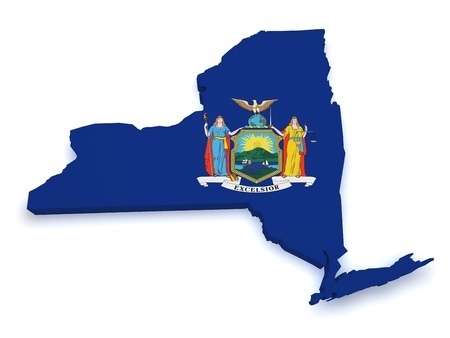Insurers Square Off Against State in Case Before High Court
Monday, August 14, 2017 | 0
Legislation that closed New York’s Fund for Reopened Cases to new claims was based on the mistaken assumption that insurance carriers were already charging employers for the cost of those claims, and threatens to saddle the industry with $1.1 to $1.6 billion in unanticipated losses, insurers argue in briefs filed with the Court of Appeals.
 Attorneys for the state, on the other hand, argue that the existence of the fund created a “perverse incentive” for carriers to settle only the indemnity portion of claims and leave future medical costs open so that the cost can be passed on to employers through assessments that amounted to a “staggering” $315 million annually.
Attorneys for the state, on the other hand, argue that the existence of the fund created a “perverse incentive” for carriers to settle only the indemnity portion of claims and leave future medical costs open so that the cost can be passed on to employers through assessments that amounted to a “staggering” $315 million annually.
A coalition of 21 insurance carriers that sued the state and Attorney General Eric Schneiderman's office have both filed lengthy briefs to preview points they will make in oral arguments scheduled for Sept. 7 before the Court of Appeals, which is New York state’s highest court.
Two amicus briefs were also filed: One by attorneys for the American Insurance Association, Property Casualty Insurers Association of America, National Association of Mutual Insurance Companies and the New York Insurance Association; another by the Electrical Employers Self-Insurance Safety Plan.
State lawmakers closed the fund to new claims effective Jan. 1, 2014, but the insurer coalition filed a lawsuit charging that the state had violated the “takings clause” of the U.S. Constitution. The New York County Supreme Court disagreed and dismissed the suit, but the 1st Department of the Appellate Division reversed that ruling in April 2016 and found that the legislation violated the carriers’ rights.
New York created the Reopened Case Fund in 1933 to pay claims that were reopened at least seven years after the date of injury if three years had passed since any indemnity benefit was paid. Claims to the fund were initially paid out of a one-time assessment, but in 1948 the Legislature responded to a shortfall by authorizing the Workers’ Compensation Board to impose annual assessments on employers to maintain the fund.
Schneiderman’s office argues in its briefs that lawmakers passed the law to protect both injured workers and insurers. Injured workers needed assurance that their claims would be paid if they had to reopen their cases and their employer’s carrier had gone insolvent. Insurers needed protection from unforeseen costs, the state’s brief says.
The state argues that insurers should never have presumed that they would be able to receive reimbursement from the fund forever. New York courts have repeatedly upheld the right of lawmakers to adjust workers’ compensation carriers’ future obligations in ongoing cases, the state says. For example, appellate courts have upheld the state’s right to increase permanent disability benefits even for ongoing claims.
“When insurance carriers issued their policies, they may well have hoped that the fund would remain open forever to absorb their payment obligations in reopened cases,” the state’s brief says. “But that expectation was simply an assumption that the status quo would continue — much as, in the Supreme Court’s example, an investor might enter into a real-estate transaction on the assumption that property taxes or zoning regulations would remain as they are.”
The Electrical Employers Self-Insurance Safety Plan put the impact of the change of rules into concrete terms. The organization administers a workers’ compensation program created by a collective bargaining agreement between employers and the International Brotherhood of Electrical Workers Local Union No. 3.
EESISP said in its amicus brief that it administers 59 workers’ compensation claims related to the Sept. 11, 2001, terrorist attack on the World Trade Center, and has received an additional 2,249 notices from employees reserving their rights to file future 9/11-related claims.
Then brief says it has filed 25 applications to the Reopened Case Fund for 9/11 related claims, which its actuary projects have a value of $21.9 million. Its actuary estimates an additional 87 claims in the future with a projected value of $85.6 million.
“EESISP did not account for the (fund closure’s) retroactive impact, which will devastate EESISP’s loss reserve calculations and ultimately wreak havoc on EESISP’s own excess insurers,” attorney Jared Zola wrote on behalf of the plan.
The brief also takes issue with the state’s argument that insurers had already changed employers for the cost of the reopened claims through premiums they collected. EESISP noted that after the legislation to close the fund passed, the New York Compensation Insurance Board passed a 4.5% rate increase attributable to the fund closure. That rate increase, however, took into account only the cost of claims filed after closure of the fund, not the claims filed before.
The state contends in its brief, however, that employers should not be asked to bear the burden of reopened claims indefinitely. Insurers were put on notice that the fund may be closed in 2007, its brief says, when the Legislature closed the Special Disability Fund. Afterward, the cost of claims to the Reopened Case Fund tripled from less than $100 million in 2006 to more than $315 million in 2013.
“The Legislature rationally determined that the problem of skyrocketing assessments should be addressed by closing the fund to new applications, while minimizing the disruption to carriers’ settled expectations by keeping the fund in place for cases that have already been transferred,” the brief states.




Comments